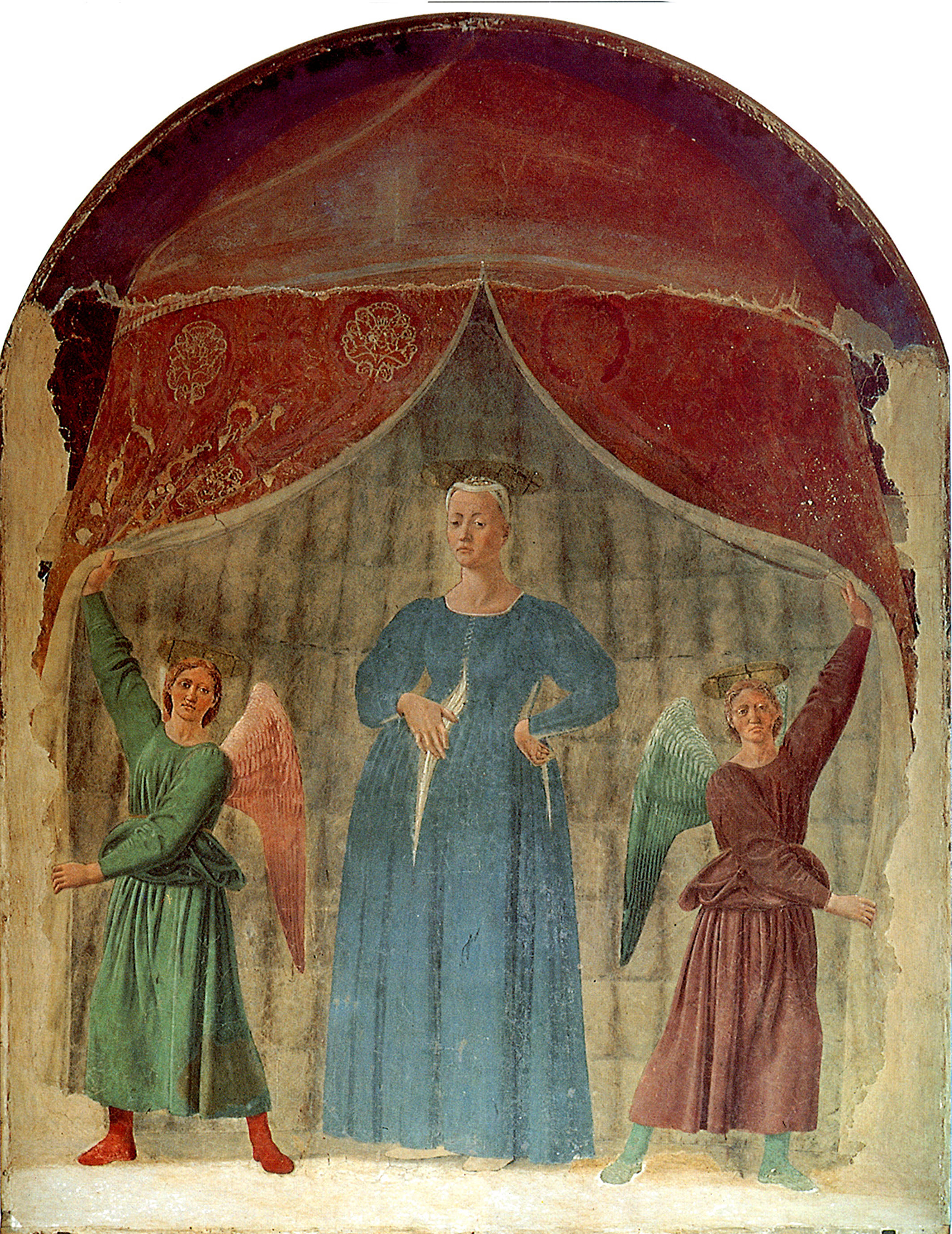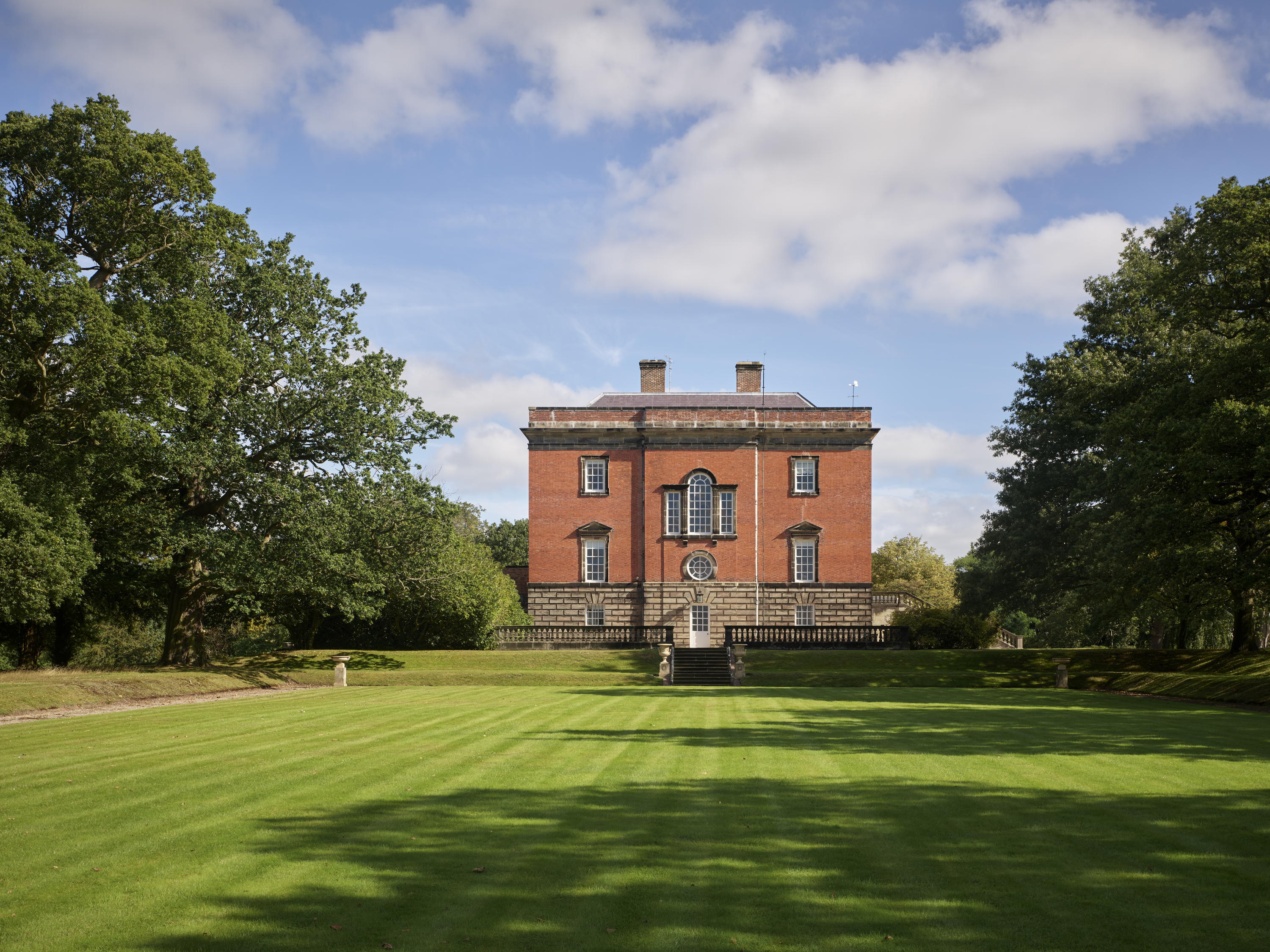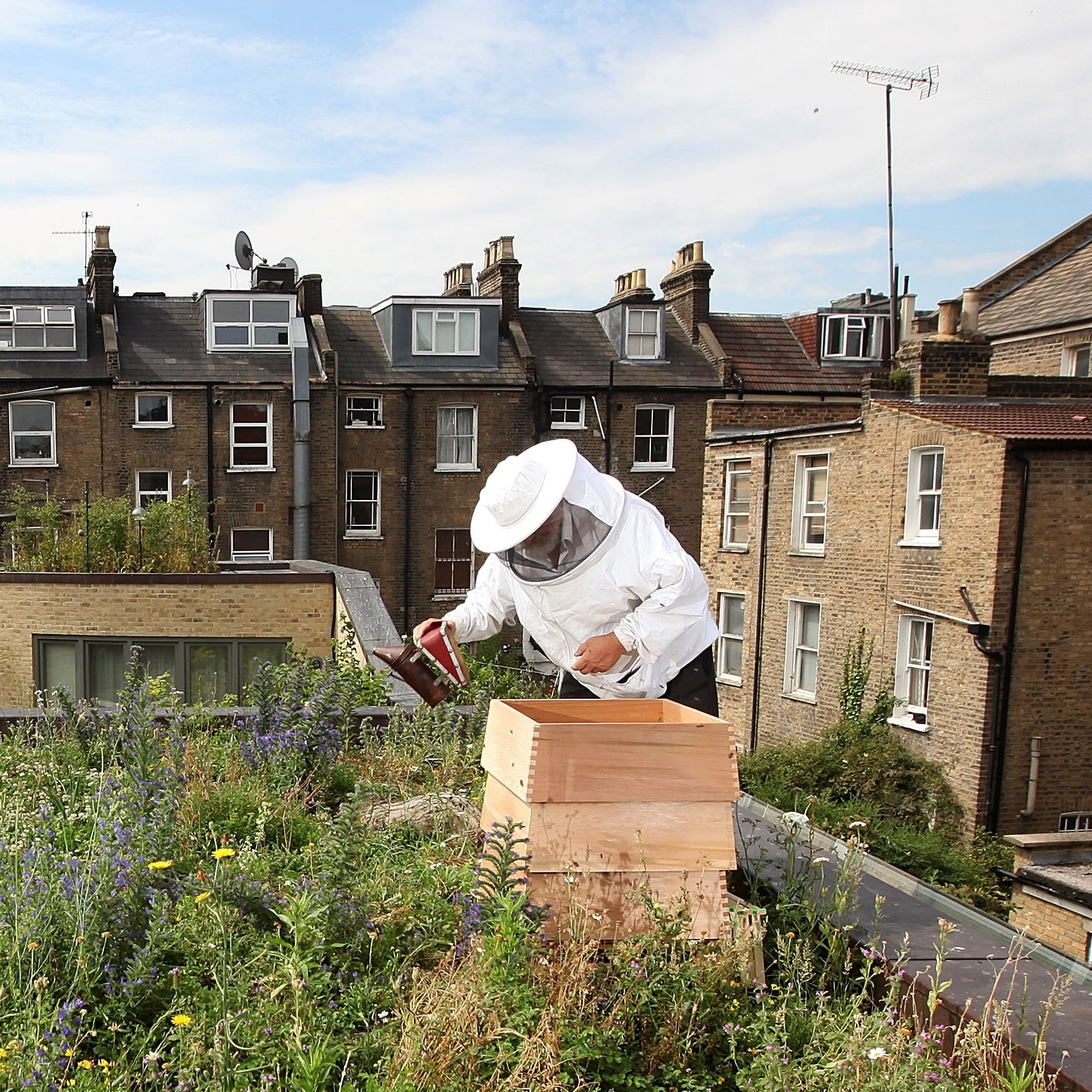My Favourite Painting: Lachie Stewart
The architect Lachie Stewart chooses a Piero della Francesca masterpiece from the 15th century.


Lachie Stewart on Madonna del Parto by Piero della Francesca
Lachie’s words weren’t taken from today — instead, he provided this excerpt from his diary of August 1979, written when on a travelling scholarship from Edinburgh College of Art.
'AREZZO'A town full of exciting surprises.'Many small craft shops on the streets and lanes, bookbinders and furnituremakers. The church tower with “100 windows” and columns piling up on top of each other. San Domenico has jolly wall patterns of interest. These were used to frame huge areas of painted decoration.'The House of Vasari had Adam-style decoration; I wondered if that Scot had ever seen it. The Piero della Francesca frescos of men in many numbers dressed for battle were very strong. It was the first time I had seen his paintings outside a gallery. The next day, a visit to one of the greatest paintings I have ever seen — the Madonna del Parto in Monterchi.'
Lachie Stewart is an architect and co-founder of design company ANTA.
John McEwen on Madonna del Parto
When I visited the famous ‘Pregnant’ Madonna 30 years ago, it dominated the apse of a chapel-sized church outside the hill-top village of Monterchi, between Sansepolcro and Arezzo. There was no other visitor and it was moving to see such a famous painting in this modest and private place. Today, it is in a former school in Monterchi and its re-siting is debated.
The original location subjected it to a turbulent history. The fresco suffered from neglect, but withstood an earthquake and the reconstruction of the church, which was reduced and re-aligned, the altar moved and the fresco taken from a side wall to the apse.
Its artistic assurance suggests a date from the artist’s maturity. His mother, Romana, came from Monterchi and died at about the time of the fresco’s probable date, but no document suggests it honours her death. The Madonna became an object of devotion for local women, but whether in gratitude, supplication or both is conjecture. Their veneration may also have owed something to an ancient pagan fertility cult. For Piero himself, the painting probably referred to the words of the Salve Regina (Hail Mary): ‘Show unto us the fruit of thy womb, Jesus.’
Infra-red and ultra-violet photography has revealed that the Madonna’s stance was more defined, her hands more delicate, her head-dress more elaborate. The tented canopy held open by the angels was more sumptuous, its outside decorated all over.
Fresco requires speed, the paint absorbed when the plaster is damp. Additions can be made a secco, to the dried surface, but at the price of shorter durability. The angels are surely one model duplicated, albeit opposites in the colour of wings and apparel.
Sign up for the Country Life Newsletter
Exquisite houses, the beauty of Nature, and how to get the most from your life, straight to your inbox.
Country Life is unlike any other magazine: the only glossy weekly on the newsstand and the only magazine that has been guest-edited by HRH The King not once, but twice. It is a celebration of modern rural life and all its diverse joys and pleasures — that was first published in Queen Victoria's Diamond Jubilee year. Our eclectic mixture of witty and informative content — from the most up-to-date property news and commentary and a coveted glimpse inside some of the UK's best houses and gardens, to gardening, the arts and interior design, written by experts in their field — still cannot be found in print or online, anywhere else.
-
 Radbourne Hall, Derbyshire: The Palladian masterpiece reborn as a 21st century family home
Radbourne Hall, Derbyshire: The Palladian masterpiece reborn as a 21st century family homeJohn Goodall takes a look at the incredible resurrection of Radbourne Hall.
-
 Urban beekeeping — from the illegal rooftop hives in New York City to Chelsea Flower Show
Urban beekeeping — from the illegal rooftop hives in New York City to Chelsea Flower ShowThe Tuesday of Chelsea (May 20) is World Bee Day; to celebrate The London Honey Company is sponsoring the Show's Bees of Development Balcony Garden.
-
 'As a child I wanted to snuggle up with the dogs and be part of it': Alexia Robinson chooses her favourite painting
'As a child I wanted to snuggle up with the dogs and be part of it': Alexia Robinson chooses her favourite paintingAlexia Robinson, founder of Love British Food, chooses an Edwin Landseer classic.
-
 The Pre-Raphaelite painter who swapped 'willowy, nubile women' for stained glass — and created some of the best examples in Britain
The Pre-Raphaelite painter who swapped 'willowy, nubile women' for stained glass — and created some of the best examples in BritainThe painter Edward Burne-Jones turned from paint to glass for much of his career. James Hughes, director of the Victorian Society, chooses a glass masterpiece by Burne-Jones as his favourite 'painting'.
-
 'I can’t look away. I’m captivated': The painter who takes years over each portrait, with the only guarantee being that it won't look like the subject
'I can’t look away. I’m captivated': The painter who takes years over each portrait, with the only guarantee being that it won't look like the subjectFor Country Life's My Favourite Painting slot, the writer Emily Howes chooses a work by a daring and challenging artist: Frank Auerbach.
-
 My Favourite Painting: Rob Houchen
My Favourite Painting: Rob HouchenThe actor Rob Houchen chooses a bold and challenging Egon Schiele work.
-
 My Favourite Painting: Jeremy Clarkson
My Favourite Painting: Jeremy Clarkson'That's why this is my favourite painting. Because it invites you to imagine'
-
 The chair of the National Gallery names his favourite from among the 2,300 masterpieces — and it will come as a bit of a shock
The chair of the National Gallery names his favourite from among the 2,300 masterpieces — and it will come as a bit of a shockAs the National Gallery turns 200, the chair of its board of trustees, John Booth, chooses his favourite painting.
-
 'A wonderful reminder of what the countryside could and should be': The 200-year-old watercolour of a world fast disappearing
'A wonderful reminder of what the countryside could and should be': The 200-year-old watercolour of a world fast disappearingChristopher Price of the Rare Breed Survival Trust on the bucolic beauty of The Magic Apple Tree by Samuel Palmer, which he nominates as his favourite painting.
-
 My favourite painting: Andrew Graham-Dixon
My favourite painting: Andrew Graham-Dixon'Lesson Number One: it’s the pictures that baffle and tantalise you that stay in the mind forever .'